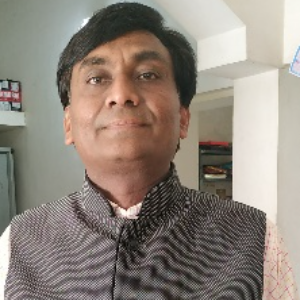Title : Microemulsion based in situ gel of Erythromycin for Ocular Ailments
Abstract:
Background: Conventional preparation of erythromycin ointment is available in the market as an ocular formulation. Ointment dosage form is linked to many side effects, including transient blurred vision, irritation and redness of the eye. Ointment dosage form also shows very low ocular bioavailability of drug due to various anatomical and precorneal constraints such as corneal epithelium, tear turnover, nasolacrimal drainage, reflex blinking and induced lacrimation. Ointment also exhibits poor patient compliance for administration in eye. Erythromycin belong to BCS class 3 showing poor permeability through the restrictive precorneal barriers. Hence, there is a need to develop it in formulation that eliminate the limitations of ointment.
Aim: The aim of the research was to develop and evaluate a topical ocular dosage form that is capable enough to deliver entrapped drug to infected tissue and offering prolonged retention and higher permeation for ocular ailments without eliciting any side effects. In this research we have tried to develop microemulsion based in situ gelling system which may give prolonged and sustained release with higher permeation at the site of application and reduction in dose frequencies thereby, improving patient compliance.
Methods: Erythromycin was incorporated into the microemulsion. Quantitative method was used to perform solubility study of Erythromycin in various oils, surfactants, and co-surfactants. The oil, surfactant and co-surfactant which exhibited highest solubilization of drug was selected for microemulsion preparation. The optimized microemulsion was dispersed in a polymer solution of 0.2 % gellan gum. This polymeric solution upon administration in to the eye was able for transition into gel triggered by the electrolytes present in the simulated tear fluid.
Results and Discussion: Microemulsion based in situ gel formulation approach provided better corneal permeation and prolonged retention of the drug that may lead to improved local bioavailability of the drug. The globule size of microemulsion formulation was ~47nm with PDI of 0.237 indicating monodisperse nature of the formulation. The viscosities of the formulation before and after gelation were 82 cp and 540 cp, respectively indicating good gelling capability of the developed formulation after administration. Ex vivo permeation study from goat eye cornea revealed that permeation of Erythromycin from developed formulation was comparatively high than from its ointment.
Conclusion: It was concluded from the research that novel microemulsion based in situ gelling formulation of Erythromycin exhibited higher permeation and longer residence time and it could be potential drug delivery system for treatment of bacterial eye infections.
Audience Take Away Notes:
- The audience will use this research for development of novel alternate formulation to improvise local bioavailability of the drug in ophthalmic region
- The research will be useful for the audience in their job by providing them a systematic path for development novel drug delivery starting from preformulation, screening of excipients and optimization
- The incumbent teachers could use this research for teaching as well as research
- This research will definitely provide a practical solution to a problem for formulation designer scientists
- The detailed approach of novel formulation development will assist in formulation design and development
List all other benefits:
The audience will learn about the systematic development of novel formulations to address the problem of existing formulations



